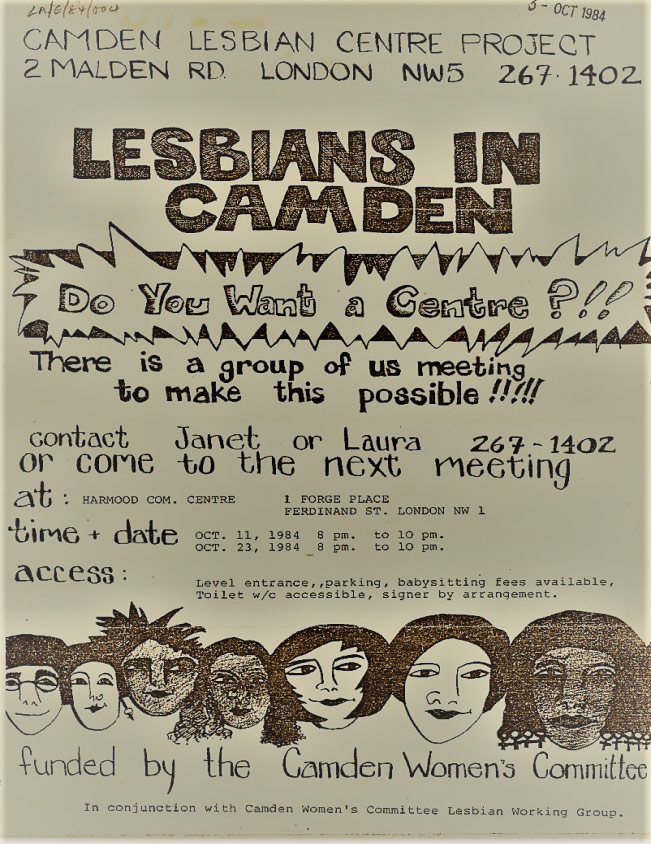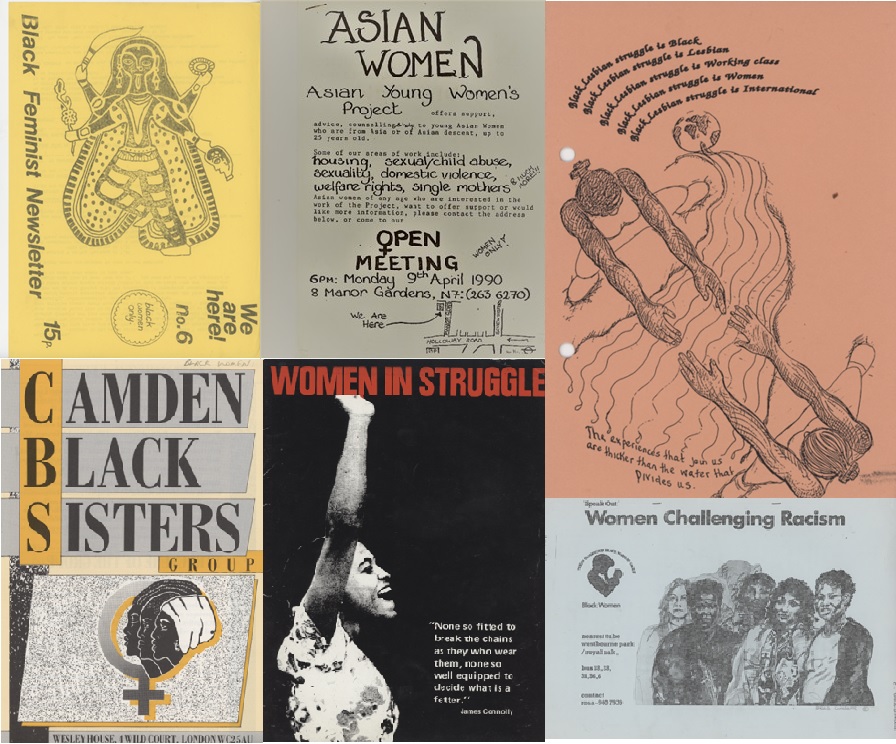by Sonia Chand
The Camden Lesbian Centre and Black Lesbian Group’s archive collection holds many exceptional and thought-provoking stories. By glimpsing at the lives of the people who lived through this period in our history I began to see the struggles produced with having ones identity defined in terms of race and sexuality. For instance, I found bold posters, angry exchanges of letters and politically motivated sabotage (found in the form of newspaper clippings) which revealed the hostile environment Camden’s black lesbians found themselves in. However, it also contains images portraying the inclusivity, warm-heartedness and intersectionality of the Black LGBT scene.

A Centre
The handmade leaflet above blazes ‘Do you want a centre?’ The answer was a resounding yes and in 1982 Camden’s first Lesbian group opened a community centre on Phoenix Road, London.
Two years after the establishment of Camden’s Lesbian group a separate Black Lesbian group was formed group specifically for diverse women who in addition to facing sexual discrimination also had to overcome the difficulties brought on by racial and ethnic difference. London was fast-cementing its place as Britain’s most multicultural city and with that label came backlash from some who felt displaced by newer more colourful identities. As a result of these hostile attitudes, there are countless examples of Camden’s Black and Lesbian group’s attempts to swim against the currents of their time. I have selected some pieces which I think reflect the group’s dynamic spirit and unique position in society.
Black and British
It is interesting to note that the term ‘black’ has undergone a considerable transformation in British society. In the 1970s/80s ‘black’ was an umbrella term which covered a wide range of people. It was used to refer to people of African, Caribbean and South Asian origin. The Black Feminist Newsletter, pictured below, perfectly reflects such inclusivity and cultural mixing. Set on a yellow background it shows the image of a Hindu deity with her tongue sticking out. She has four arms just like a traditional goddesses when engaging in a battle with celestial forces. The multiple arms symbolise the deity’s vast power and ability to perform several acts at the same time. It is interesting to note that she could be any women. This ambiguity makes us focus on what she represents rather than how she looks. Similarly, ‘black’ is being used here in an all-encompassing ideological way. By fusing different minorities who are usually separated by ethnicity, nationality or religion this image functions to unite the victims of racism as a collective group. Therefore, the Black Lesbian group made itself known as a refuge for people whatever the colour of their skin or ethnic origins. In the images below, we see more celebrations of difference:

Internationalism
In fact, difference in terms of sexuality and race helped to unite the group and strengthen the resolve for their own space and position in society. One of the posters above shows two black women reaching for one another across an expanse of water. From one corner of the earth to another they are trying to connect because the:
Black Lesbian Struggle is Black
Black Lesbian Struggle is Lesbian
Black Lesbian Struggle is Working Class
Black Lesbian Struggle is Women
Black Lesbian Struggle is International
The experiences that join us are thicker than the water that divides us.
The term Black Lesbian is deeply intersectional. It shows itself to be connected to every struggle faced by black women and does not rank inequalities by importance or worth. The group clearly had a great sense of internationalism from their vast collection. They amassed various magazines and academic articles from around the world, particularly from Africa and Asia. These stories could have helped to form a stronger sense of self and belonging for Camden’s lesbians as they came into contact with the experiences of women who were similar to themselves.
The Issue of Whiteness
The very existence of the Black and Lesbian group is testament to the fact that race played (and continues to play) a major role in British society. The racialized nature of society contributed to the white nature of mainstream LGBT scene and the complications of coming out when homosexuality was being treated as a ‘white’ issue. But Camden’s black lesbians reclaimed their sexualities and re-orientated lesbianism as a fundamentally black issue. They met regularly to connect over shared experiences and offer support that came in various forms from advice on housing, welfare, family affairs to self-defence classes, coffee evenings and poetry workshops. Here, women could make their voices and experiences heard despite the multiple layers of discrimination they faced.
Photographs from events held at the Centre, found across the collection, help to shift us away from the idea of the LGBT community being an exclusively white enclave. Black lesbianism in Britain had, and continues to have, a tangible face and powerful voice to its story. Despite the centre’s closure this collection gives us a window into that history. We see different women working together to build a safe space. A space that simply could not be found anywhere else. Ultimately this collection grants a renewed sense of hope for the LGBT community and their continued story.
—
Return to We Recruit!: Campaigns and Organisations or the LGBTQ Collections Online Resource.
—


